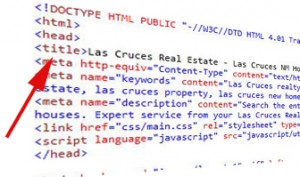If you don’t remember anything else I say remember these 2 SEO tips
Personal SEO does a lot of training and coaching on optimization for websites and blogs and while most of those sessions can get a little overwhelming, there are two key ideas out of the entire process that I really want people to get.
Meta-title and description and internal linking.
SEO and proper website optimization utilizes hundreds of small little keys, tricks, techniques, and ideas all working together to create a perfectly optimized webpage that not only readers like but search engines as well. We don’t want to write for search engines alone but also for our clients and customers because the end result is a lead and income generating client. If you want to blog and write and creative website simply for the sake of having one out there than by all means, do it however you want. But if you want to be found and if you’re blogging for business, these two factors hold the keys to getting found and getting business.
Meta-title and description
The title of your blog posts or webpage is going to be a crucial key and being found on the search engines. While catchy phrases and Nuance quips might catch someone’s attention in a blog roll or on social media, these titles are just not going to be searched for. You need to do the research on what someone is searching for, how high your competition is, and then tailor your title with those two factors and still have it encompass the entire topic of the idea of the blog post all in one.
I’m going to use examples throughout this blog to show you exactly what type of titles to use. Beth Atalay offers a blog and a website for Orlando real estate and while Orlando is a huge city to try to monopolize on the search engines for, she goes for the neighboring towns and communities, specifically Clermont Florida. Most of her blog posts are specifically titled and centered around Clermont and the surrounding neighborhoods and towns. Her latest blog post entitled “Golf Course Homes in Clermont” is well optimized the kinds the amount of people searching for homes in Clermont much less even more specific for golf course homes, will be a narrowed niche of a search meaning she should get leads from people specifically looking for this type of real estate. She has titled her blog properly, created a heading tag within the first paragraph, and specifically talked about all the homes on golf courses around Clermont Florida.
Linda Abraham monitors and manages DenLinProperties.com. She focuses her blogging on specific listings, communities and towns in Southeast Michigan. Instead of just having a listing blog on her website she does a specific blog for that listing and titles it properly. Her most recent post, “3 Bedroom Country Home in Almont MI” focuses on what someone would search for rather than an address or too general of a term. Then she has specifically and intentionally laid out the description which is also shown in search engines as “This Country home in Almont MI is nestled among 10 acres of wooded beauty. Want to see more Almont MI Homes for sale – 248-885-0610” having the phone number in the description allows those searchers that use a Google specifically for a phone book, instant access to this property and the listing agent.
So this brings us to the description.
The meta-description is the 160 characters that is shown in the search engine results page under the main title. This will also be searched for using keywords and many times people use it as a phone book so your contact information is important to be there should the topic require it. Randy Bocook offers two different websites to his clients; a buyers page and the sellers page each with different domains. His main website focuses on selling homes in Richmond Hill Georgia and his description underneath this title emphasizes the fact that he lists real estate, condominiums, homes, residential property and the like in and around the Richmond Hill. Everything you want to be found for should be included in the title and the description.
Internal linking
This is the second key factor when it comes to perfectly optimizing a website. There’s no point in writing and blogging if you can’t keep people on your website. How long people are staying on your website is extremely important when it comes to Google’s measurement of authoritative ranking for your website. If people are finding your site through the title or description yet  simply clicking away after reading one page, your bounce rate goes up and your authority goes down. So how do you keep people on your website?
simply clicking away after reading one page, your bounce rate goes up and your authority goes down. So how do you keep people on your website?
Rob Shepherd is a prominent Florence Oregon real estate agent that blogs exclusively about his area, local events, and real estate information. You can view his most recent post here and you’ll notice the amount of internal linking with in the post itself. Think of Wikipedia; there are so many internal links that take you to another page on the same site for clarification or description. The idea is to keep people on the website by leading them from one page to another with teaser links and more information. You’ll notice at the bottom of this post there are two links to similar posts. (similar to this post) You don’t want to overwhelm your readers but you do want to give them just enough to keep on reading and learning more and before they know if they spend 30 minutes on the site and have read over 10 pages. This is really the key to keeping people on your site.
Chris Harrison has this type of linking on every page of his website not only in the content but in the signature as well. There are little snippets of teaser links spread out throughout the content giving you the option of clicking and learning more when you come to that bit of information.
Again, there are dozens if not hundreds of little tips and tricks all to entice search engines and readers to find your website but honestly, these are the two most important factors I would want you to remember. Always be intentional about your title and description and keep readers on your website longer by offering teaser internal links, descriptive links to related pages, and related posts at the end of each page.
